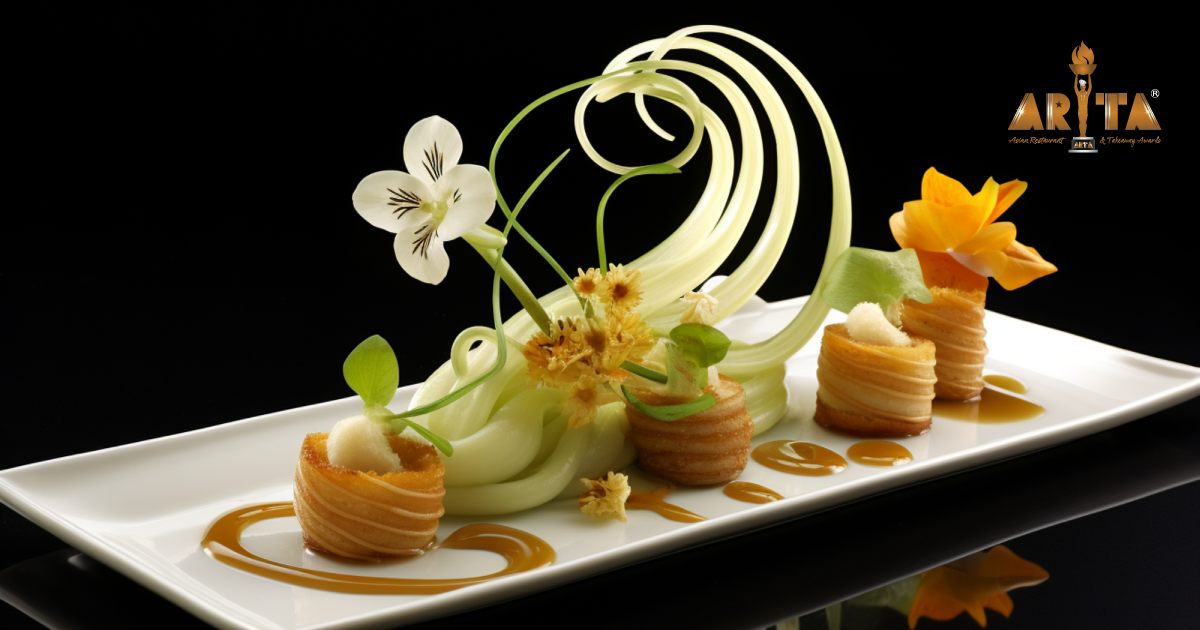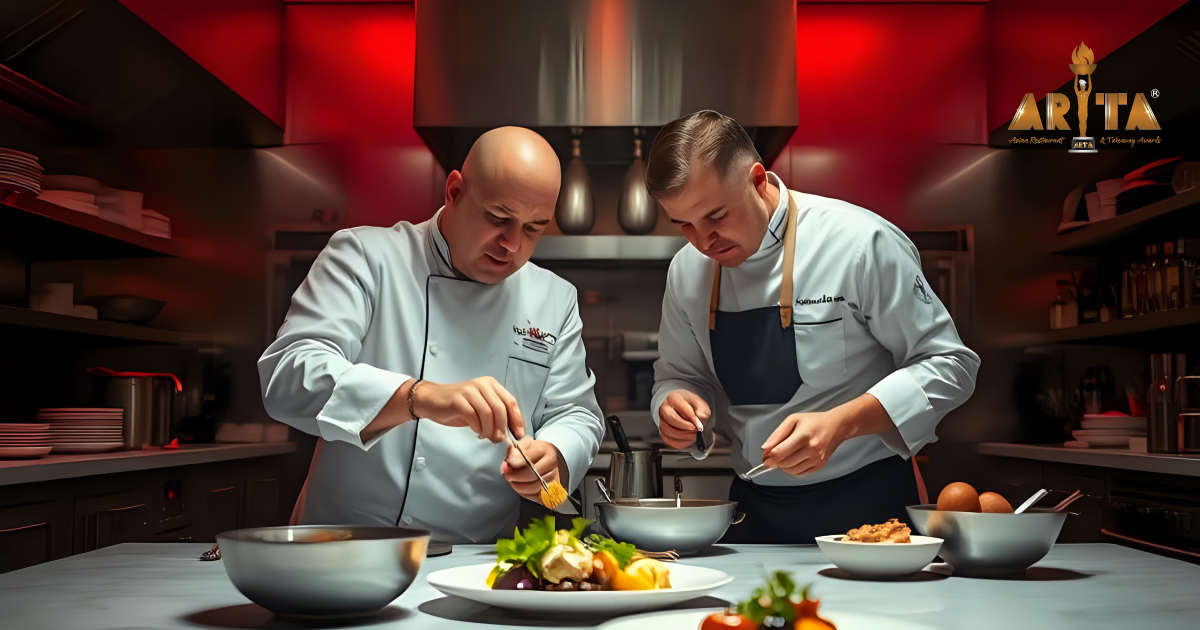The art of plating is what seasoned chefs and restaurateurs consider a visual charisma to impress customers. It’s a creative culinary process to present your dishes artistically.
Craftier presentations, hungrier customers— that’s how it works.
However, today, the art of plating goes beyond customer satisfaction. In fact, it can win you a prestigious restaurant award or global recognition for your business. An ultimate path to glory in the culinary industry.
What’s the connection between the visual appeal in food and restaurant awards? We’ll find that out very shortly. Read on.
What Is Visual Plating?
Just putting together the ingredients one after another on a plate isn’t enough. What makes it visually attractive is being creative and bold in arranging foods and plates. That’s what visual plating is.
For instance, your meat dish texture should ooze its juiciness and look crispy enough to make the diner not waste a moment to have a bite. Similarly, a vegetable or salad dish should look as fresh and vibrant as a garden so the customer finds it appetising.
There are numerous ways to decorate a plate, so there’s no single definition of visual plating. As an art, it goes beyond traditional boundaries, enabling chefs to customise each dish with unique creativity and grandeur.
However, besides culinary decor, judges of award panels also consider cultural touches in the art of plating while nominating restaurants for awards.
6 Basic Elements of Visual Plating: A Path to Win a Restaurant Award
If you’re serious about contending for a prestigious restaurant award like ARTA or others with your visual plating skills, follow some essential elements of plating.
So, let’s reveal those six elements of an artistic plating:
-
Start with a Framework
By a framework, you must visualise your ambitious plating design. You can simply start with a pencil and paper. Sketch your food decoration. Give the elements their true colours to bring your sketch to life.
Next, you can try plating practically with real ingredients and a plate. Keep exercising until you fully master it.
-
Rely on Simplicity
The visual plating doesn’t have to be complicated. You don’t need to present your food so intricately that the customers can’t figure out what’s served before them. So, simplicity is the way to go.
To learn how to simplify your plating, start with a single-ingredient dish. It could be a single-flavour ice cream, a vanilla or chocolate cake, or a beef steak. Learn to present your dish fresh, lively, and appetising.
-
Keep the Portion Appropriate
It’s essential to keep your customers intrigued by your art of plating. The best way to do this is to maintain an appropriate portion of each dish. However, it’s trickier than said.
In this case, the nicest way to ensure the right portion is to provide plates of the right size. The plate shouldn’t be too large or too small. Align the plate size according to what dish is served, be it desserts, vegetables, or meat dishes such as the popular Indian dish Chicken Tikka Masala or Butter Chicken.
-
Strike a Balance
Learning how to balance your ingredients is vital. The judges are often sceptical about the right balance in a plating.
The colours shouldn’t be too contrasting. The shape of each ingredient must be proportionate. Moreover, the texture of your dish should be in harmony with the colour and size.
For instance, don’t use too bright garnishing on a chocolate brownie. But the plate you use in this dish can be pure white to make the deep chocolate shade shine with stark contrast.
-
Make Key Ingredients Shine
One crucial element of perfect plating is ensuring that the key ingredients visually speak to the diners. If your roasted chicken isn’t crispy and warm enough in texture, it will turn the diners off.
Conversely, if the garnishing on your dessert or vegetable outshines the main dish, that’s also not an ideal culinary plating. Hence, focus on making the main ingredients a little more catchier than others.
-
Add Heights and Layers
Height is something that can aesthetically and literally elevate your dish while plating. It makes a dish look like a decoration peice, making both customers and judges appreciate the effort.
So, learn the proper measurements for adding heights and layers to your dish. For example, you could carefully stack chopped chives or basil leaves above a fish or chicken dish or use a quenelle or scoop to serve ice cream or dessert.
Key Takeaways
Visual plating can play a significant role in landing a food industry award. Imagine as a customer that you’re served a visually stunning dish. It captivates both your eyes and taste buds.
An award judge panel would think just like that valued customer who’s looking for every penny worth the dish.
So, below are what you can take away from this article:
- The art of plating isn’t just creativity but also meticulous presentation.
- Mastering visual plating requires time and practice.
- Visual plating is a crucial component of winning a restaurant award.





